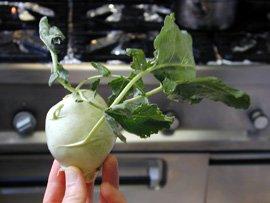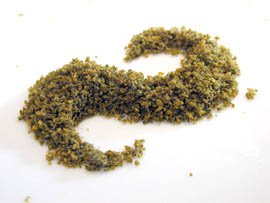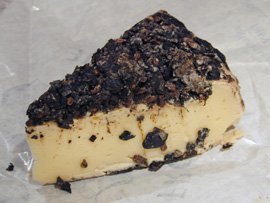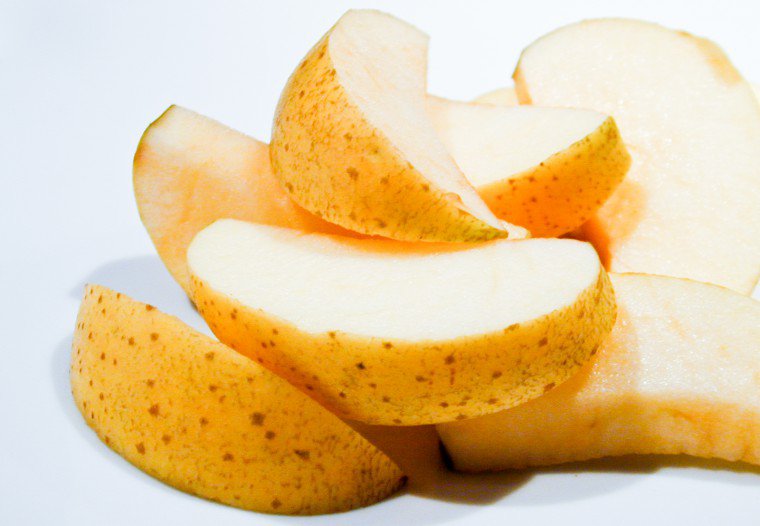
Le Gibassier is a specialty from Lourmarin, the beautiful village in Provence where I spent Easter in my aunt and uncle’s house. It is a large blond cookie of about a foot in length made with olive oil and shaped like an oval leaf.
It is possibly named after Le Gibas, a nearby summit of the Luberon mountain range, but the confusing thing is that gibassier is also a type of sweet focaccia-like bread baked with olive oil and flavored with orange flower water. This also goes by the name of fougasse or pompe à huile (literally “oil pump”!) and is one of the traditional thirteen Christmas desserts. I have been able to locate recipes for the bread-like Gibassier, but not the cookie: this may warrant a little offline research, as is often the case when you get to such specific and local micro-facts.
What I can tell you though, is how delightfully tasty this biscuit (in the French sense of the term) is. The large amount of olive oil that is obviously involved in the recipe (the paper bag was smooth and shiny within the hour) gives it a very sophisticated flavor and a unique moistness, yet it does not taste greasy at all and is very subtly sweet. The surface shows an unusual scale-like texture and this, combined with the multiple slits that were cut in the dough prior to baking, ensures interesting sensations in every bite and for each of the happy friends you will share it with. Because yes, as you may have guessed (didn’t we recently talk about portion-control?) this is most definitely a break-off-a-chunk-and-share cookie — yet another thing I like about it.
I bought it from Riquier, my aunt and uncle’s favorite boulangerie, where they bought the loaves of bread to feed the twenty-plus family members that they entertained with such natural talent over the week-end, and where I also purchased pignolats, these fabulous crescent-shaped pinenut cookies.







